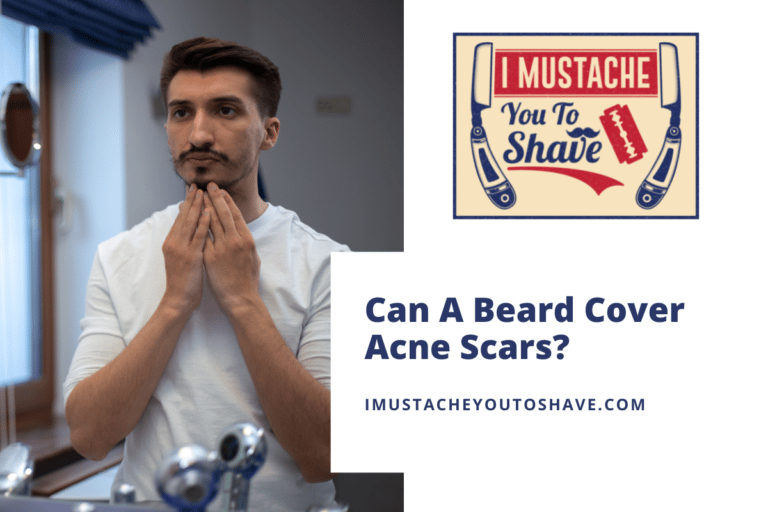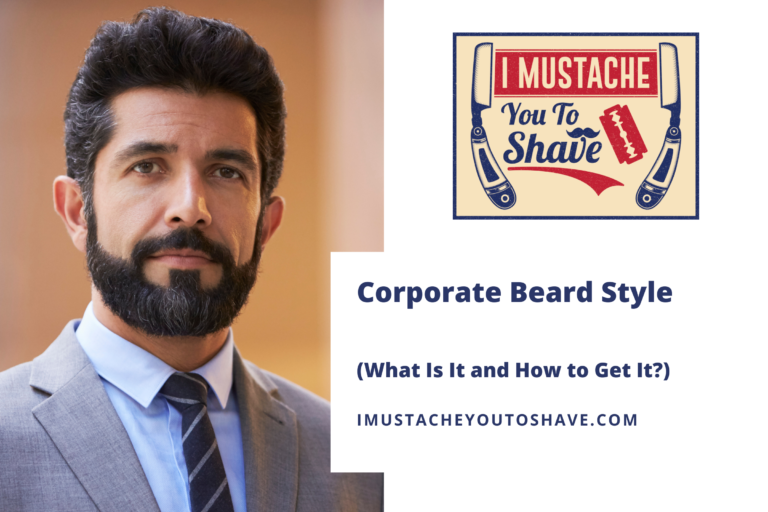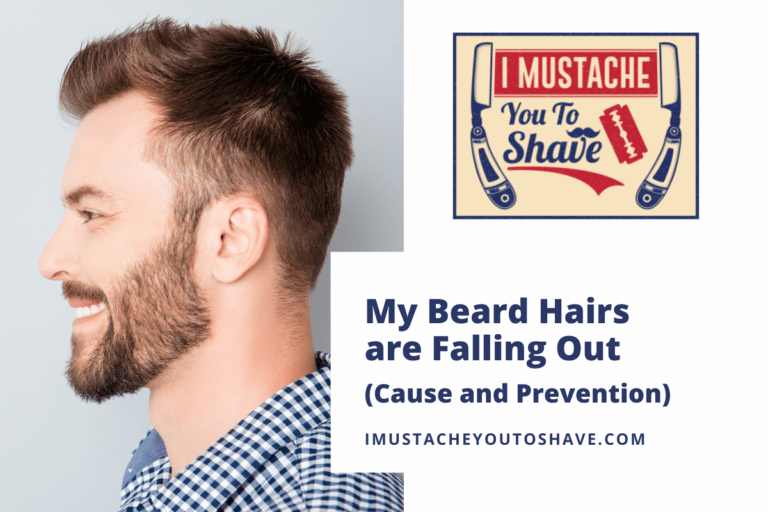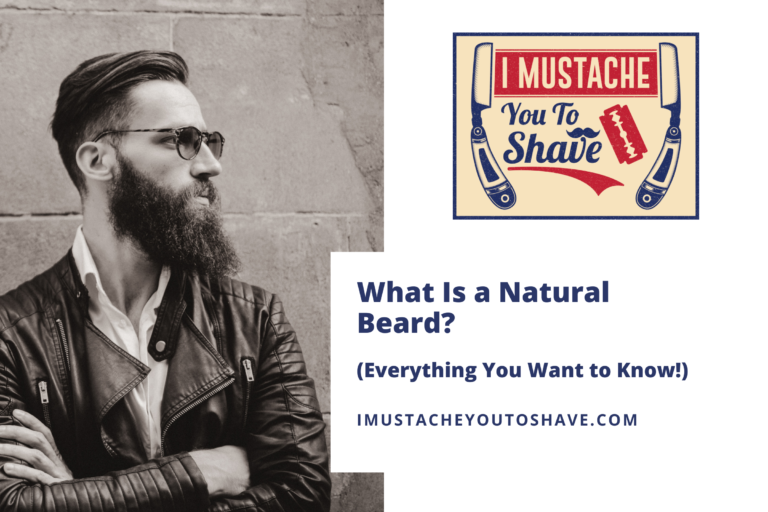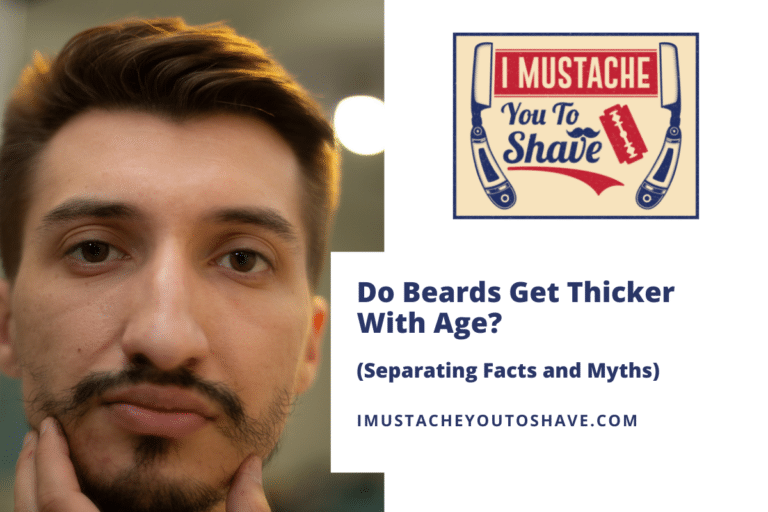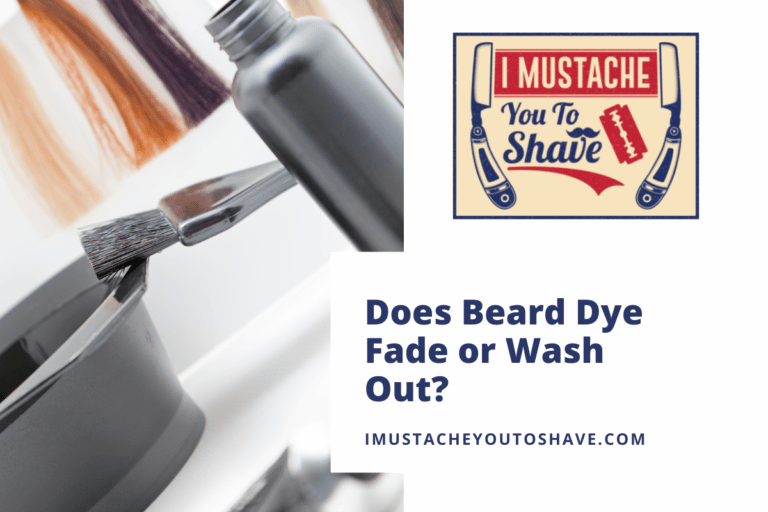Why Does My Beard Look So Thin and Wispy? (Practical Styling Fixes)
Not all facial hair is created equal. Some men have been blessed with full beards while some of us struggle with a thinner wispier growth.
A variety of factors including genetics, age, and diet influence beard growth and appearance, all of which contribute to beards looking thick and full or thin and wispy. While some of these are out of your control, there are ways to style a thin beard to improve its appearance: keep it neat, clean, and moisturized, eat well, and drink water.
Read on to learn how to keep a thin or wispy beard looking its best.
Why does your beard look thin and wispy?
A large number of men worldwide do not produce whiskers that add up to a thick growth.
Your ethnic ancestry is the largest contributing factor to your facial hair. Some of us have a more sparse distribution of hair follicles while others are blessed with a carpet of whiskers or thicker hair. Other factors include age and diet.
Sometimes genetics unfairly catches the blame for some of our physical shortcomings. Age, stress, malnutrition, and sleep deprivation have all been known to affect hair growth but our heritage is the key to our beards. Many Asians, indigenous peoples of the Americas, and those from portions of Africa historically do not grow as much facial hair as Europeans or the Arabic.
Scientists have yet to determine the reason males produce beards as they are biologically useless. It was thought for some time that beards were for attracting mates but studies have recently argued that women are not significantly drawn to facial hair. Beards are actually more appreciated among other men than attracting partners. Beard envy is very real and is described as seeing a beard that is thicker and wishing that yours was as good or better.
So when a man looks at his beard in the mirror and is less than pleased with what he sees it is based on his comparison to other beards. Long story short, if you feel your beard is thin or wispy it is perfectly normal and you are not alone.
However, if your beard is normally thick but now seems to be thinning and becoming brittle then it could be time to consult a medical professional. It could be something as simple as alopecia barbae or a symptom of something much more serious.
Will a thin beard fill out?
There is no specific age at which a man’s beard will stop developing, but once that age has been achieved, it will not thicken further throughout his life.
Beard growth is not complete until the final stages of puberty, which are much closer to a man’s thirties than his teenage years. If you’re still young and unsatisfied with the fullness of your beard, it could fill out as you age. Patience is the first rule of facial hair.
If you are just nearing or entering your thirties and you are not seeing your beard fill out then it is time to accept it will not thicken much more. This is perfectly normal and you can still own a great look even with a thin beard.
Just know that some men are genetically predisposed to have bushy facial hair while some are destined for less.
Beard looks thin in the sunlight
Does your beard look thick most of the time but seems to thin out the moment you step outside and stand in the sun?
Your beard is often made up of several colors with certain ones being dominant enough to make your beard appear a certain color most times. Different colors reflect more like while others can be a bit more transparent.
This is completely normal but also be aware that excessive sunlight can be damaging to hair as well as skin. It has been suggested that beards offer some SPF protection but not enough. Make sure to keep your beard oiled to prevent sun damage.
Some men wear specifically curated shirts to make their beards appear more full. This is called beard flexing. Beard flexing is much like choosing clothes that make your eyes more noticeable. Wearing a shirt that accentuates your facial hair may be a great way to combat unflattering light washing away your beard.
Thin beard only on the cheeks
A thin beard on the cheeks compared to substantial growth on the upper lip or chin is not uncommon.
The location and density of your beard growth are determined by your genetic hair follicle density. These hair follicles do not produce at uniform rates, meaning that your facial hair may grow at different rates.
Sometimes a beard will fill out with enough patience.
Beard looks thinner as it gets longer
Sometimes you’ll start growing your beard and it will seem thick and full, but start to diminish and thin out with growth.
Malnutrition, stress, and hydration can affect the performance of hair follicles. If your beard doesn’t maintain its thickness and luster, examine your overall lifestyle and health.
The effect of stress on a beard is pretty remarkable. Longer periods of high stress can crash your testosterone, depriving your hair follicles of the hormones needed for growth.
Lack of nutrition and hydration can also cause follicles to produce much more weakly.
Steps to make a thin beard look thicker
While there is no miracle growth elixir to apply to bare spots and thinner hair there are a few foolproof methods to make your beard look its best.
Follow these steps to help your beard look thicker and fuller:
- Keep it neat
- Keep it clean
- Keep it nourished
- Eat well
- Drink water
- Get sleep
Keeping your beard neat, clean, and hydrated will always help you make you look your best. These tips help make you look healthy and demonstrate your concern for your appearance.
The best way to appear healthy is to be healthy. If your body is starved for energy, water, or energy it will not waste any of those resources growing or maintaining hair.
Your hair will reflect your overall health.
How to trim and groom a thin beard
Beard maintenance – through grooming and trimming – should be given proper respect from the moment you decide to commit to beard growth.
Proper beard maintenance is required no matter if you are going for the scruffy look or the wise wizard.
Be patient, let your beard grow, and put in the proper maintenance and you will turn some heads.
Let it grow
Longer hair will create a thicker look up to a certain point.
Around the 3-week mark, you should have a good indication of the sort of growth you can expect. Take a good look and be honest with yourself and work from there.
Patchy places will fill in eventually but bare spots likely will not.
Trim and shape
Do a web search for a barbershop or salon that deals with men’s facial hair. These shops have barbers and/or stylists that will know how to groom your facial hair and will gladly provide answers to any questions you may have about making your beard look its best.
Beard trimming and shaping is a skill that must be practiced and requires experience. Just like you wouldn’t give yourself a new haircut, you are probably not the right choice to make major changes to your beard. Find a local barbershop that specializes in beards and focus on maintaining the style between appointments.
Unfortunately, many barbershops are ill-equipped to provide skillful beard trims or edging, particularly large franchises that are primarily focused on quick (hair) trims.
Recommended beard trimmers
Even if you choose to leave the beard shaping and detail work up to the professionals, you still need a trimmer that’s up to the task of daily maintenance.
There are some great trimmer systems on shelves now, but you will probably have the best luck asking your barber which one he uses or recommends.
If you don’t have a professional on hand, I recommend these beard grooming kits:
- Philips Norelco Multigroomer – This kit includes a variety of guards that easily clip on and off for length changes, including detail attachments and two fade combs. The rechargable razor base boasts a 5 hour run-time per charge, meaning you don’t need to charge it every day.
- Wahls Groomsman Beard Trimming Kit – This kit includes a variety of cutting lengths and has a rinsable head for easy clean up. Reviews indicate that the trimmer is better for maintaining the shape of longer beards than close-skin shaves.
How to wash and care for a thin beard
Beard maintenance is crucial from stubbly growth up to a wizard’s length.
Wash your hair, keep it moisturized, and comb it out. Outside of maintenance, facial hair does respond well to a healthy diet, water intake, exercise, and rest. You could say that what’s good for the body is good for the beard.
You should also keep in mind that men who compete in beard and mustache competitions grow their whiskers with a specific goal in mind. Keep a clear picture of what look you want and patiently cultivate.
Beard washing
Keeping your beard and face clean is the first step in cultivating growth even for a short stubble or longer.
The best beard washes contain the most natural ingredients possible. They are often lightly fragranced but have the task of removing excess oil and debris from the hair. Some will contain oils such as argan or shea butter to provide a bit of hydration.
For thinner and finer hair, use particular caution not to wash too often as you could strip nutrients from the hair or even damage the hairs causing breakage.
Hydrate and moisturize
The first step in trying to make a thin beard appear thicker is avoiding the compulsion to purchase hair growth serums. There is a lack of sufficient evidence to support their growth claims and no serum will cause hair to grow where there is no follicle.
While serums do not always work as well as advertised some products will hydrate and moisturize which will help make the hair look more full. Beard balms, butter, and oils will also add some sheen which gives a healthy appearance.
Olive and argan oil have been lauded for giving hairs a full look; however, these oils can be a bit messy. Good beard oil can be used a drop at a time and will absorb quickly so as not to leave a greasy feeling.
How to style a thin beard
Most any man who has put some thought into their facial hair will tell you how much effort goes into their beards or mustaches.
Grooming a thin beard will automatically give it a more cultured, intentional appearance.
Thin beard styles
There are nearly infinite styling options for thin growth that look great.
When choosing a look, one of the main things to consider is the lines of the face. Make a point to talk with a stylist and let them help you build up a look to include a hairstyle that compliments your facial hair and vice versa.
Are you having a hard time deciding on your look? It’s completely ok to experiment and try something new.
Several celebrities have thin beards and mustaches that have become quite iconic. Keep reading for a short list of celebrities who are known for their well-trimmed (if thin) beards.
Robert Downey Jr

Clean, neat, and a bit regal.
Kit Harrington

A little messy without giving the impression he doesn’t put the effort into his beard. Notice the mustache combed outward.
Chadwick Boseman

Simple and elegant.
Sebastian Stan

Even just a rugged look needs some treatment but can make a thin growth look more substantial.
Pedro Pascal

Very thin but notice the uniform direction of the hair. Even the white hair is visible and the growth contours his features.
Bruce Lee

There are spots thicker and thinner than others but very presentable.
Drying
A hairdryer set on a cool setting is the best method for drying a beard according to a Korean study. This was posed to be safer for the hair than air drying.
A boar bristle brush (not synthetic) can help brush away moisture and redistribute the oils in the hair. More on combing and shaping will be discussed further in another section.
Balms, waxes, and styling products
A wide variety of beard and mustache products are becoming more readily available.
Determining the appropriate product may seem overwhelming but the goal is to determine what we want the hair to do before we buy the product.
Balms and butters are often reserved for thicker beards. While they will not hurt a thin beard, they may prove to be a bit heavy the thin hair. Balms and butter offer a nominal amount of hold.
Beard oils, such as this one from Viking Revolution, are much lighter and can be absorbed much more quickly than balms or butter. Oil will not overburden light hair and will not provide any hold. Beard oil is good even for a stubble look as it helps to nourish as well as prevent loss of moisture which helps keep the whiskers looking full.
Beard or mustache wax is more dedicated towards hold than protection.
Much like hair gel, waxes offer a variety of hold options to suit individual needs. A good mustache wax helps hold your mustache together in a uniform direction which is great when the hair is longer and tries to curl into your mouth.
Note that hair gel is no substitute for mustache wax as the wax will set much more quickly and not likely lead to potential skin reaction or a general tacky feeling.
Combing and shaping
Whiskers typically respond best to styling while a bit damp.
Whether combing or brushing, stroke the hair into a uniform direction. Shorter or thinner hair benefits most from downward strokes.
As mustaches lengthen, the hair can be combed horizontally out towards the ears, creating a more full appearance while helping to keep whiskers out of your mouth.


